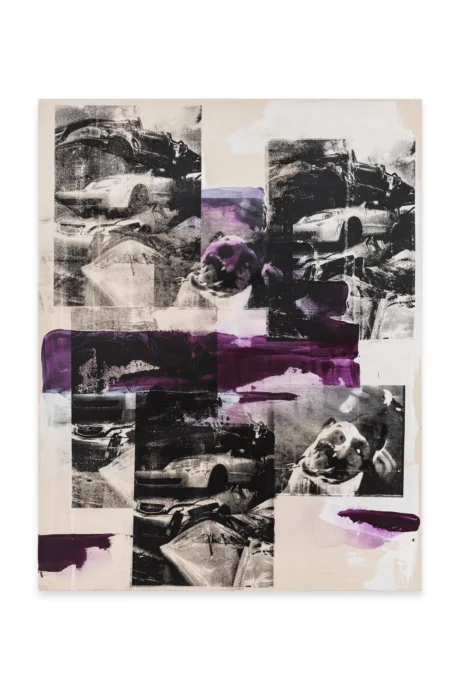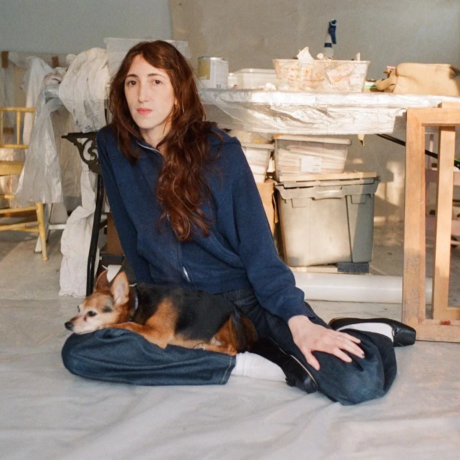After speaking with British Afro-Caribbean artist Sonia Boyce, contributor Sofia Hallstrom reports on the cultural and political significance of the iconic song “Bella Ciao” and its role in Boyce’s installation ‘Thinking Like A Mountain’ in the town of Bergamo.
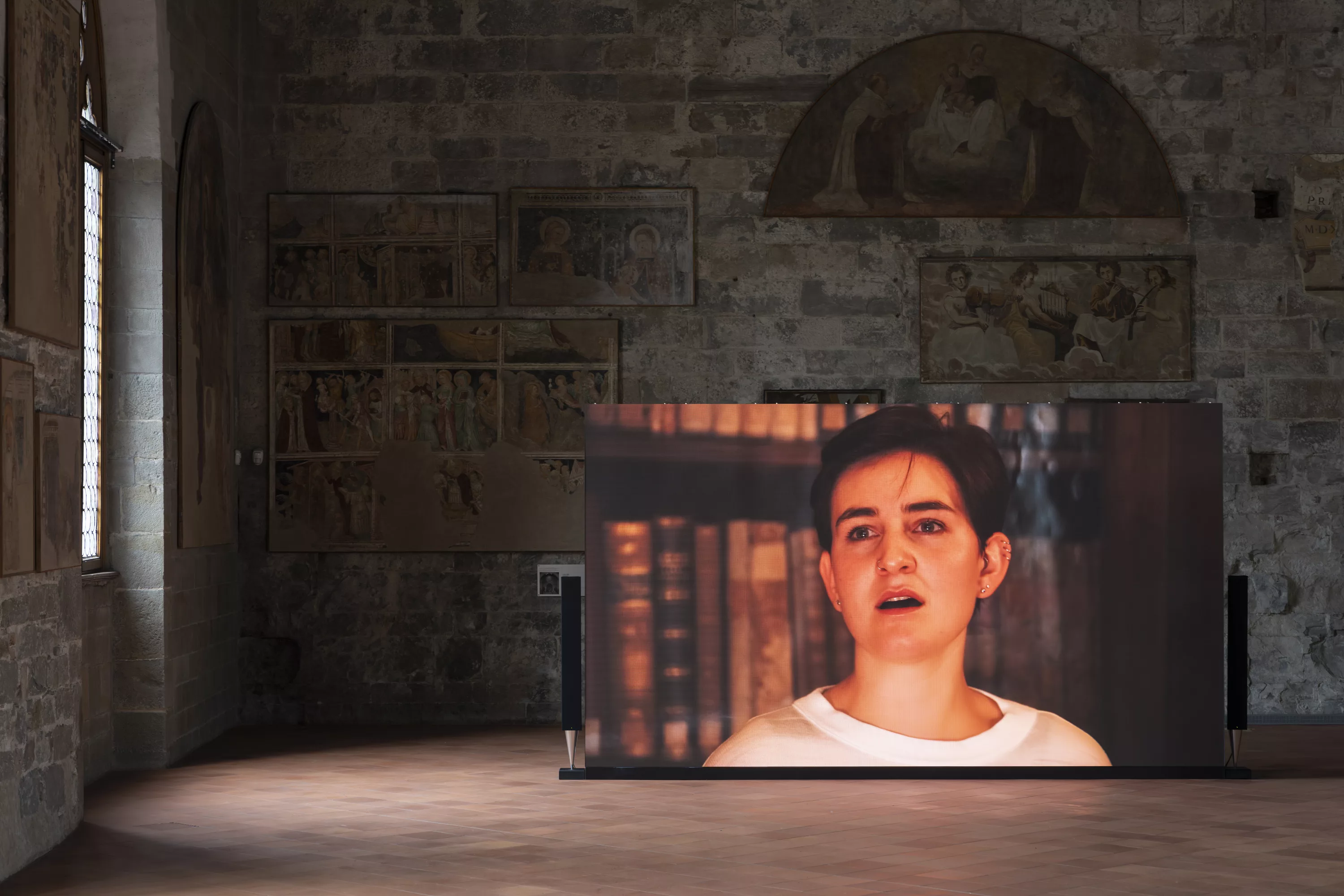
And if I die as a partisan,
You must bury me.
Oh, my beautiful, goodbye!
My beautiful, goodbye!
My beautiful, goodbye, bye, bye!
“Bella Ciao” has long since transcended its context as the de facto anthem of the partisans of the Italian Resistance in World War II. It has been sung and adapted (and sometimes rewritten) by activists, trade unionists, and antifascists throughout the world, a universal protest anthem and a marker of antifascist political identity. In Sonia Boyce’s Benevolence at the Sala delle Capriate in the Palazzo della Ragione, in the heart of the old town of Bergamo, “Bella Ciao” echoes throughout the former courtroom, while six screens play a ten-minute looping video of three singers performing the piece in Bergamo’s main piazza.
Benevolence is about the capacity of music in general, and this piece of politically-charged, universalising music in particular; its ability to unite as well as divide. Boyce first encountered “Bella Ciao” during the Covid-19 pandemic, when videos of Bergamaschi singing the song from balconies in an act of spontaneous solidarity were posted online. “I first encountered ‘Bella Ciao’ in the contemporary sense. Then people told me more and more about its role within postwar Italian history.” I am speaking with Boyce in a café just off the main piazza in Bergamo, right by the Palazzo della Ragione. “It’s important that it retains its historical and cultural meaning here.”
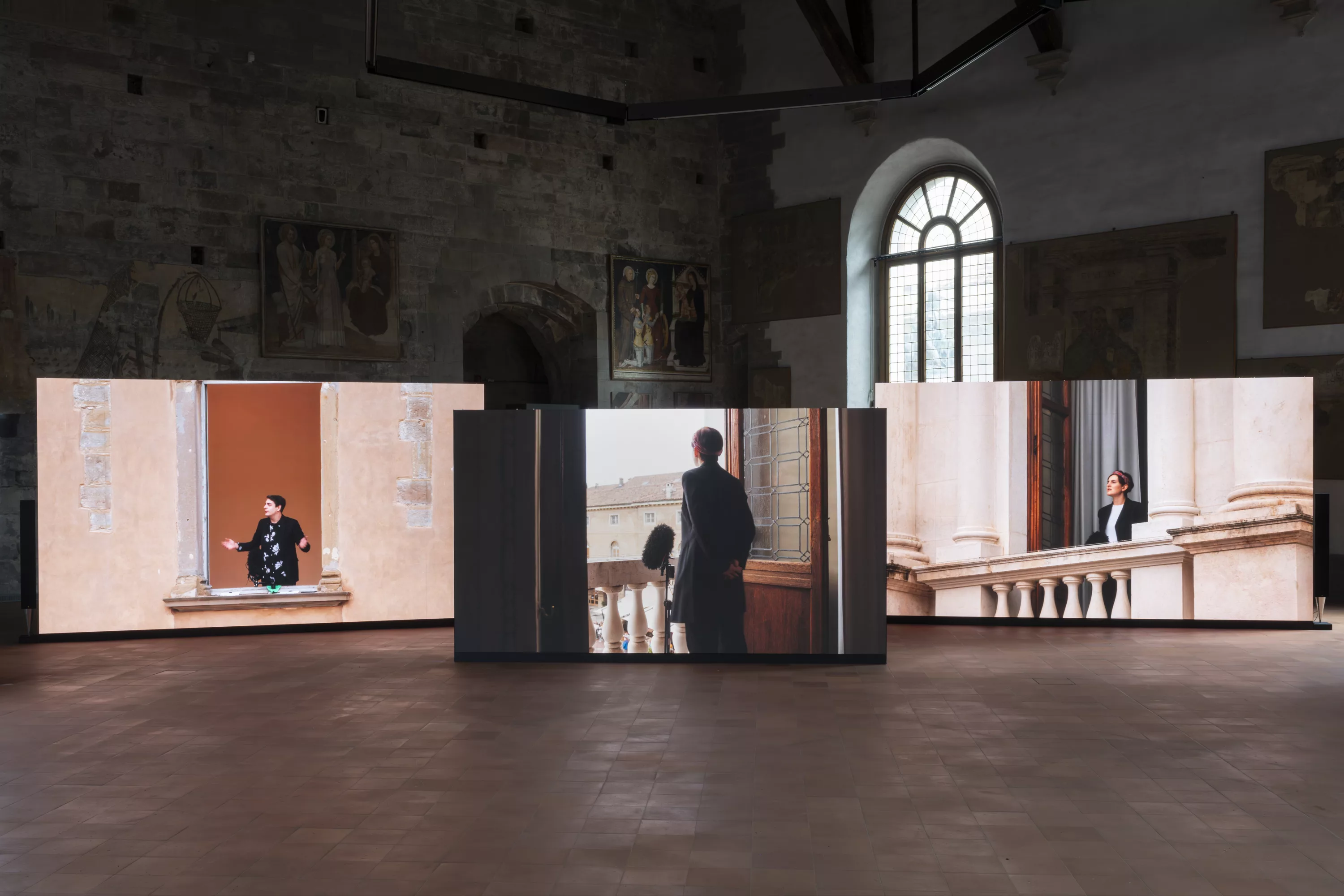
The historical and cultural history of the song within Italy is contested. Its origins are apocryphal. Some have speculated that it was originally sung in the late 19th century by the mondine of the Po valley: the women who performed the backbreaking seasonal work of weeding the paddy fields to Bergamo’s south-west; others have suggested a possible derivation from the Yiddish folk tradition, given the similarity of the melody to the klezmer accordion song “Dus Zekele Koilen.” “Bella Ciao” looms large in the Italian antifascist political imaginary, but it seems only to have gained currency after WWII: there is nothing to suggest that it was widely-sung during WWII, and the song does not feature in Pier Paolo Pasolini’s Italian Songbook (1955), the communist director’s anthology of Italian folk music.
Today, the anthem continues to be reinterpreted and used. On March 19, 2023, at a trade union convention in Rimini, Italian Prime Minister Giorgia Meloni faced a group of protestors singing the song. One month later, on April 18, a video posted online went viral when a group of Italian visitors to Hebron, West Bank, sang “Bella Ciao” at an Israeli military checkpoint. From fans chanting the song in football stands to places of political upheaval and protests, the anthem is universal. Boyce also comments on the global spread and contemporary relevance, noting its appearances in popular culture: ‘Apparently there’s a Netflix series where it’s the title track.” In his 1939 essay La mémoire collective chez les musiciens, Maurice Halbwachs identifies connections between memory, music, and identity, emphasising music’s role in fostering solidarity and collective identity. “Music actually is one of those things that really lasts. Somehow, in our bodies, we hold on to music and sound in a way that we may not even recognise we’re holding on to,” Boyce explains. The auditory components of her installation are as integral to the experience as the visual elements. “Silence is a form of resistance too. So what does silence mean when one’s been told to be silent, or when one chooses to be silent?”
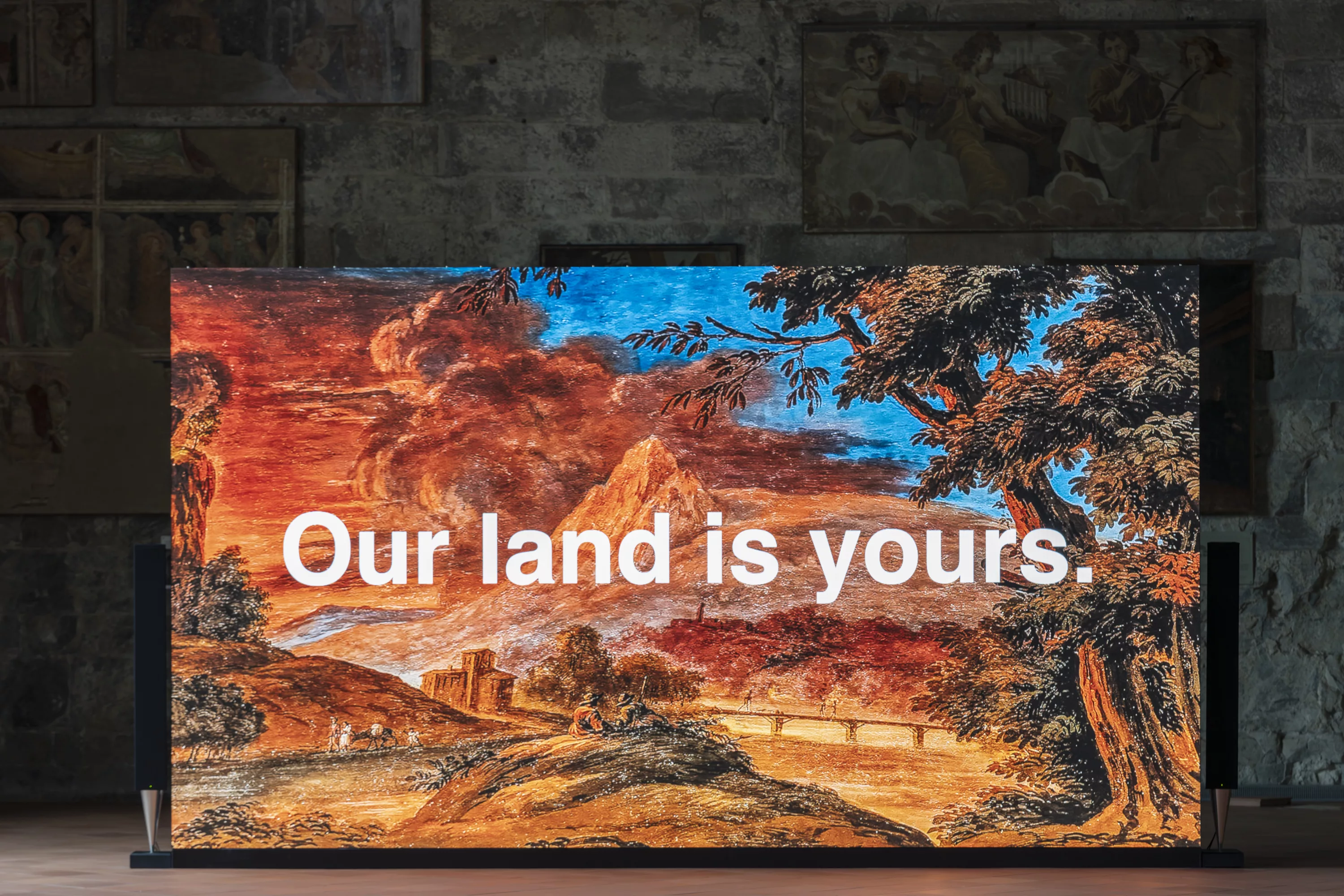
The performance, orchestrated by Boyce in October 2023, elicited mixed reactions from passers-by. Boyce tells me, “There is a moment when passers-by join in, and there’s one person visibly unhappy about the song and the unison. This dissent is important—it shows the work isn’t just about celebration but is contested.” Boyce explains her interest in polyphony: “I’m interested in diverse voices, not just a unified choir. There’s an element of chaos, with three professional singers who couldn’t hear each other but somehow stayed in harmony. The audience and passersby added to this dynamic, including those who didn’t join in. This diversity and acknowledgment of difference is crucial, especially now.”
Our conversation takes a turn as we talk about how her career began at Gasworks, a contemporary art organisation in south London known for supporting emerging artists. Gasworks provided Boyce with a crucial platform early in her career. The collaborative and innovative environment at Gasworks helped shape her approach to art, emphasising community engagement and the exploration of complex social issues. Boyce’s artistic practice has long been characterised by its deep engagement with themes of identity, social dynamics, and marginalisation. Her work and practice emphasises inclusivity and participation, reflecting the broader Thinking Like a Mountain biennale promoted by GAMeC (Galleria d’Arte Moderna e Contemporanea di Bergamo), with its goal of fostering community and sustainability. In the biennale, twenty artists or collectives are set to create events with the local communities, such as public interventions, performances, and workshops, over the two-year program. The first featured artists are Sonia Boyce, Mercedes Azpilicueta, Chiara Gambirasio, Lin May Saeed, and Studio Ossidiana. Inspired by Aldo Leopold’s concept from his book A Sand County Almanac (1949), the project seeks to form a deeper environmental sensitivity. It spans diverse landscapes, from the Alpine massifs to urban forests and agricultural areas.
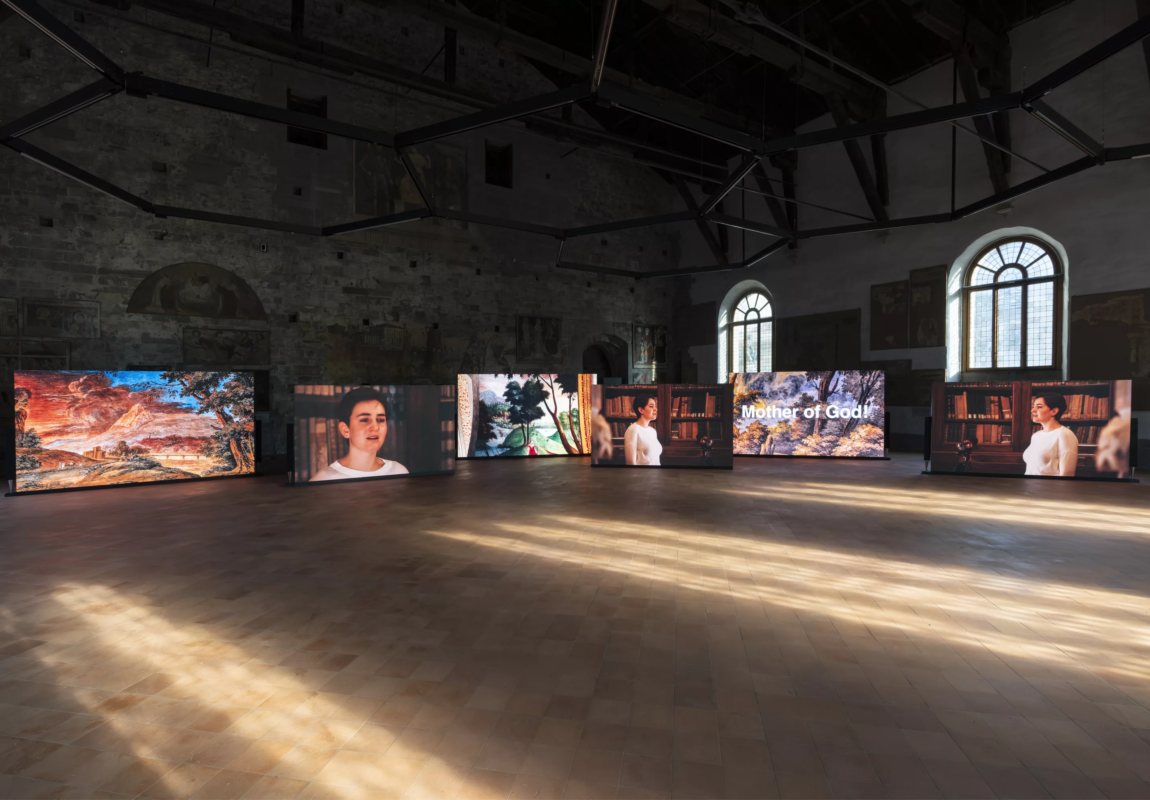
An anti-fascist anthem echoing from a former courtroom may seem somewhat out of place. “In recent years, the question about art in the public realm has been an intense discussion about tearing monuments down, keeping them up, who they are, what they speak about, who holds power,” she observes. Boyce describes the work in the space as “temporary monuments,” and her approach to creating these is both a response to and a critique of current societal debates. “It’s quite difficult for artists to do monuments at this moment because they carry such a burden of representation,” she notes. The temporary nature of her monuments does not diminish their impact, rather, it amplifies their relevance and immediacy. “A kind of temporary, monumental resistance,” Boyce calls it. “Singing is an emotional, fundamental human communication, deeply rooted in our first experiences of hearing voices in the womb.” Boyce’s choice serves to underscore the multifaceted intersections between music and cultural identity, challenging conventional boundaries and prompting a reevaluation of how historical and political concepts manifest within the context of art and culture. Her installation challenges viewers to reconsider what monuments mean in today’s context. By situating her work in a historical courthouse, she underscores the importance of justice and the ongoing struggle for recognition and equity.
Through Benevolence, Boyce not only pays homage to the song’s historical roots but also recontextualises it within the framework of contemporary social and political struggles. “Bella Ciao” has been adopted by various movements worldwide as an anthem of protest. From the streets of Europe to demonstrations in Latin America and the Middle East, “Bella Ciao”’ is a symbol of resistance and continues to resonate with contemporary struggles for justice and equality. By incorporating “Bella Ciao,” Boyce invites viewers to reflect on the song’s legacy and its relevance today, prompting a deeper understanding of how music and art can serve as a catalyst for social change.
Words by Sofia Hallstrom



